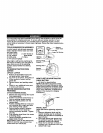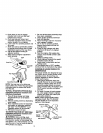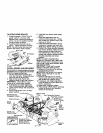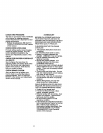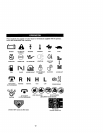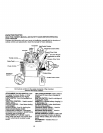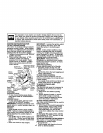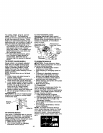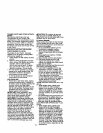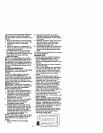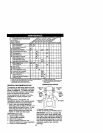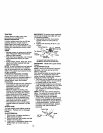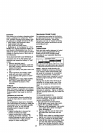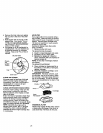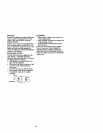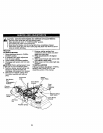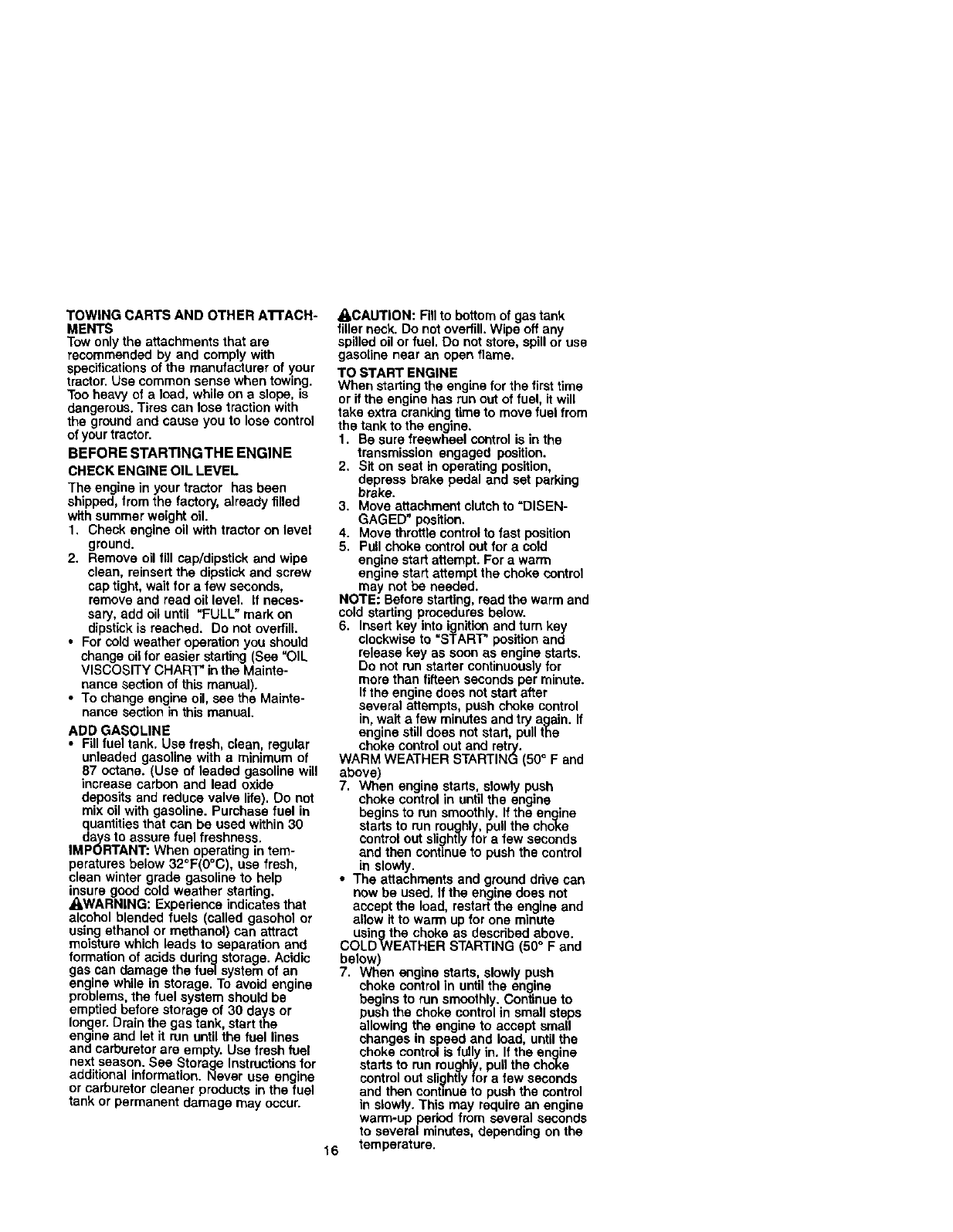
TOWINGCARTSANDOTHERATFACH-
MENTS
Towonlytheattachmentsthatare
recommendedbyandcomplywith
specificationsofthemanufacturerofyour
tractor.Usecommonsensewhentowing.
Tooheavyofaload,whileonaslope,is
dangerous.Tirescanlosetractionwith
thegroundandcauseyoutolosecontrol
ofyourtractor.
BEFORESTARTINGTHEENGINE
CHECKENGINEOILLEVEL
Theengineinyourtractorhasbeen
shipped,fromthefactory,alreadyfilled
withsummerweightoil.
1, Checkengineoilwithtractoronlevel
ground.
2. Removeoilfillcap/dipstickandwipe
clean,reinsertthedipstickandscrew
captight,waitforafewseconds,
removeandreadoillevel.Ifneces-
sery, add oiluntil "FULL" mark on
dipstickis reached. Do not overfill.
• For cold weather operationyou should
change oilfor easier starting(See "OIL
VISCOSITY CHART" inthe Mainte-
nance section ofthis manual).
• To change engine oil, see the Mainte-
nance section in this manual.
ADD GASOLINE
• Fill fuel tank. Use fresh, clean, regular
unleaded gasoline with a minimum of
87 octane. (Use of leaded gasoline will
increase carbon and lead oxide
deposits and reduce valve life). Do not
mix oil with gasoline. Purchase fuel in
quantities that can be used within 30
days to assure fuel freshness.
IMPORTANT: When operating in tem-
peratures below 32°F(0°C), use fresh,
clean winter grade gasoline to help
insure good cold weather starting.
•,WARNING: -Experienceindicates that
alcohol blended fuels (called gasohol or
using ethanol or methanol) can attract
moisturewhich leads to separation and
formation of acids during storage. Acidic
gas can damage the fuel system ofan
engine while in storage. To avoid engine
problems,the fuel system should be
emptied before storage of 30 days or
longer.Drain the gas tank start the
engine and let it ran untilthe fuel lines
and carburetor are empty. Use fresh fuel
next season. See Storage Instructionsfor
additional information. Never use engine
or carburetor cleaner products in the fuel
tank or permanent damage may occur.
ACAUTION: Fillto bottom of gas tank
filler neck. Do not overfill. Wipe off any
spilled oilor fuel. Do notstore, spill or use
gasoline near an open flame.
TO START ENGINE
When startingthe engine for the first time
or ifthe engine has run out offuel, it will
take extra cranking.time to move fuel from
the tank to the engine.
1. Be sure freewheel control is in the
transmission engaged position.
2, Sit on seat in operating position,
depress brake pedal and set parking
brake.
3. Move attachment clutch to =DISEN-
GAGED" position.
4. Move throttle controltofast position
5. Pull choke controlout for a cold
engine start attempt. For a warm
engine start attempt the choke control
may not be needed.
NOTE: Before starting, read the warm and
cold starting pmceduras below.
6. Insert key into ignitionand turnkey
clockwiseto "START" position end
release key as soon as engine starts.
Do not run starter continuouslyfor
more than fifteen seconds per minute.
If the engine does not start after
several attempts, push choke control
in, wait a few minutes and try again. If
engine stilldoes not start, pullthe
choke controlout and retry. ,
WARM WEATHER STARTING (50 F and
above)
7. When engine starts, slowlypush
choke control in untilthe engine
begins to runsmoothly. If the engine
starts to run roughly,pull the choke
control out slightlyfor a few seconds
and then continue to push the control
in slowly.
• The attachments and ground drive can
now be used. If the engine does not
accept the load, restartthe engine and
allow itto warm up for one minute
using tho choke as described above.
COLDWEATHER STARTING (50 F and
below)
7. When engine starts, slowly push
choke control in until the engine
begins to run smoothly. Continue to
push the choke controlin small steps
allowing the engine to accept small
changes =nspeed and load, untilthe
choke control is fully in. If the engine
starts to run roughly,pullthe choke
controlout slightlyfor a few seconds
and then continue to push the control
in slowly. This may require an engine
warm-up periodfrom several seconds
to several minutes, depending on the
16 temperature.



